AI in Amazon Advertising: Smarter Tools for Better Performance
Managing Amazon ads can feel like a full-time job with constant performance tracking, campaign adjustments, and endless data to analyze. As competition continues to rise and manual optimization becomes less effective, it is becoming harder to stay ahead using traditional methods. Many advertisers are now turning to AI powered tools to simplify their workflows and make data driven decisions faster.
In this blog, you’ll learn how artificial intelligence is reshaping the way advertisers plan, optimize, and measure success on Amazon. From smarter automation and predictive analytics to improved content creation and performance reporting, we’ll explore how AI helps you save time, enhance results, and run campaigns with greater precision and control.
Quick Hits
- AI in Amazon Advertising = speed and accuracy: automate reporting, bidding, and optimizations so you spend less time on spreadsheets and more time on strategy.
- Generative and agentic AI raise performance: create listings, images, and videos, answer questions from data, run root-cause analysis, and execute approved actions like pausing keywords or shifting budgets.
- Predictive analytics and planning: forecast winners across keywords, ASINs, and hours of the day; use dayparting and budget pacing to focus spend during peak conversion times.
- First-party data powers the edge: combine Amazon Marketing Stream, Amazon Marketing Cloud, and DSP signals to target smarter, measure full journeys, and reduce wasted spend.
- Human + AI is the winning model: AI handles heavy lifting; you guide brand goals, creative direction, and accountability to scale Sponsored Products, Brands, Display, and DSP with confidence.
The Rise of AI in Amazon Advertising
AI is rapidly transforming how advertisers plan, run, and optimize campaigns. In 2024, 78% of companies were already using AI in at least one business function, and 84% said it improved their decision-making speed. By 2025, this adoption will grow even further, 92% of advertisers plan to increase their use of AI in marketing and advertising.
For Amazon advertisers, the impact is clear. AI tools have already driven a 67% reduction in manual campaign management time, allowing brands and agencies to focus on strategy rather than spreadsheets. As automation becomes the new normal, AI is no longer just a competitive advantage, it’s the foundation for smarter, faster, and more efficient advertising.
Core Components of AI in Amazon Advertising
The foundation of AI in Amazon Advertising lies in how effectively data, algorithms, and automation come together to enhance decision-making and campaign performance. At its core, AI uses massive amounts of real-time shopper data to identify trends, predict behavior, and make smarter advertising decisions automatically. Every click, search, and purchase helps refine how ads are shown, ensuring that your campaigns reach the right audience at the right time.
The root of AI implementation in Amazon Advertising is data-driven intelligence. Amazon collects billions of data points daily across customer interactions, which are then analyzed using advanced machine learning models. These models power features like predictive bidding, audience targeting, and performance forecasting. Automation builds on top of this by executing real-time optimizations, that is, adjusting bids, placements, and budgets without manual input.
Together, these systems create a powerful feedback loop where every campaign run makes the next one more accurate and efficient. This combination of machine learning, data analytics, and automation forms the backbone of AI in Amazon Advertising, helping you reduce guesswork, optimize performance, and scale campaigns with confidence.
How Generative AI is used in Amazon Advertising?
Use Case | What It Is | Example Prompt or Application | AI Tools / Examples | Impact for Advertisers |
Summarization | Turning large amounts of performance data into short, actionable insights. | “Summarize last month’s campaign performance into 3 key wins and 2 risks.” | Adbrew Intelligence, ChatGPT for Amazon Ads reporting | Saves hours of manual reporting and makes it easier to identify trends at a glance. |
Question Answering | Getting direct answers from complex Amazon Ads reports or dashboards. | “What was my ACOS for Sponsored Brands last week?” | Adbrew Intelligence, Amazon Marketing Cloud (AMC) queries | Reduces time spent digging through data; provides instant clarity for performance evaluation. |
Agentic AI (AI That Takes Action) | Not just answering, but doing — planning steps, running analyses, and executing actions automatically. | “Pause underperforming keywords, shift budget to best-selling products, and create a new Sponsored Display campaign.” | Adbrew Intelligence, Amazon Agentic AI | Enables hands-free optimization, ensuring campaigns stay efficient and responsive 24/7. |
Creative Generation | Producing ad copy, visuals, videos, and headlines automatically based on product data and shopper intent. | “Generate a Sponsored Brand headline and image variation for my top ASIN.” | Amazon AI Creative Studio, Generative Ad Models | Accelerates creative testing and improves engagement with personalized, high-quality assets. |
Predictive Optimization | Forecasting future campaign performance using machine learning to anticipate results. | “Which keywords are likely to convert best next week?” | Product Research | AI summarizes insights to show patterns in demand, competition, and customer behavior. |
Use Cases
Generative AI is changing how you manage and grow your Amazon advertising efforts. It helps you automate repetitive tasks, uncover insights faster, and create smarter campaigns that deliver better results.
In the following sections, you’ll explore how AI supports different areas of Amazon Advertising, from reporting and optimization to campaign creation and creative development. Each use case shows how AI can simplify your workflow, improve performance, and help you focus on strategy instead of manual work.
Summarization
Reporting and Strategic Insights
Before:
Reporting and analysis used to require hours of manual effort. You had to compile data from different campaigns, keywords, and products into spreadsheets, then create summaries by hand. These reports were often generic, time-consuming, and lacked actionable insights. It was also difficult to connect trends or performance shifts to specific business goals, making strategic planning less precise.
Now: AI-Powered Reporting
AI now transforms how you analyze performance and create reports, turning complex data into meaningful, easy-to-understand insights.
- Intelligent Report Summarization: AI Agents like Adbrew Intelligence can process massive performance datasets and generate clear, executive-ready summaries that highlight trends, opportunities, and risks specific to your brand.
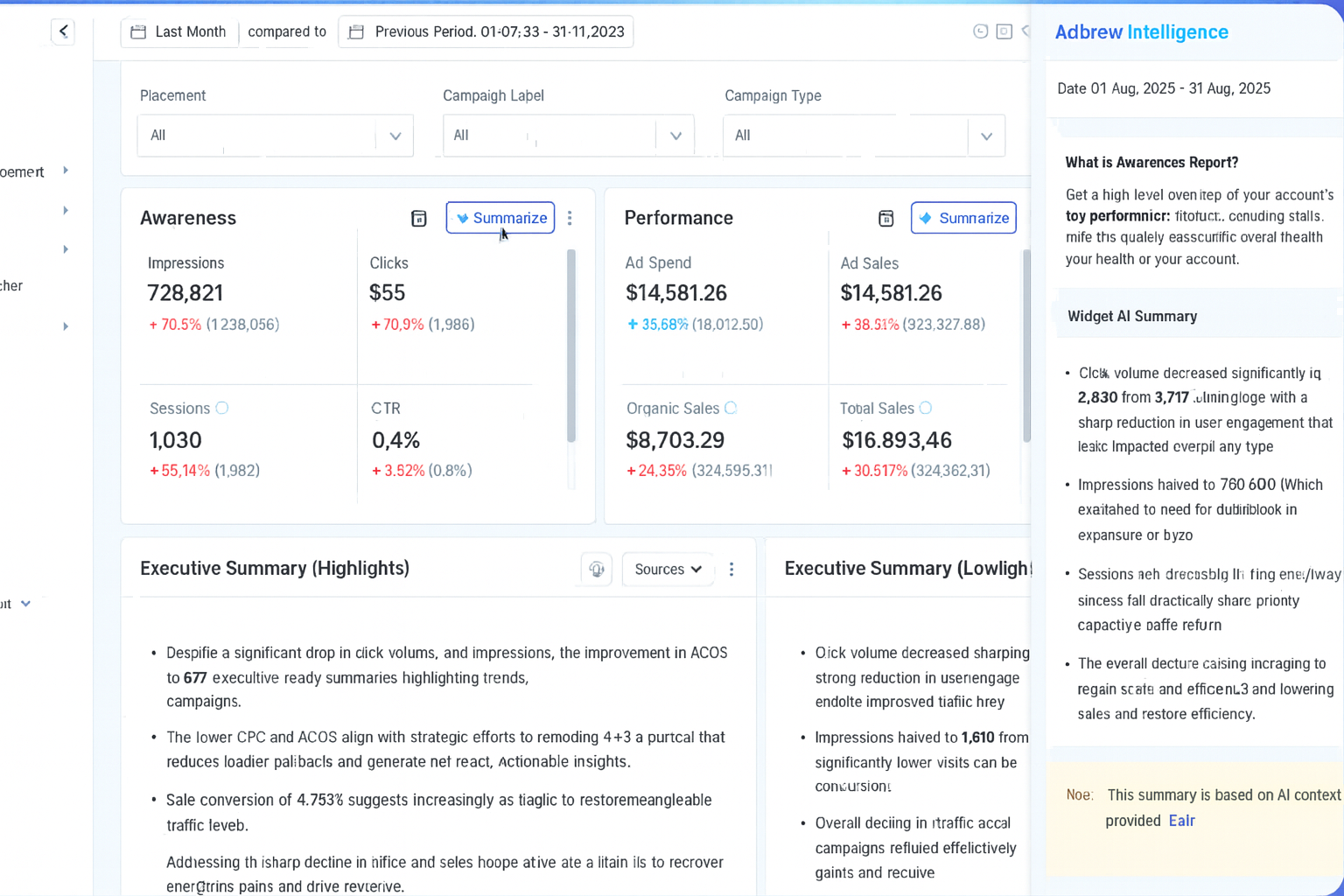
- Context-Aware Insights: It goes beyond numbers by understanding your brand goals, seasonal patterns, and competitive landscape to deliver more relevant and actionable insights.
- AI-Prompted Dashboards: With AI-powered dashboards, you can create visual reports and summaries instantly using simple text prompts, making it easier to review strategy, identify issues, and plan next steps.
Question Answering
Performance Monitoring and Root Cause Analysis (RCA)
Before:
Tracking performance and diagnosing issues in Amazon campaigns used to take hours of manual work. You had to investigate sales drops, keyword fluctuations, or underperforming campaigns by checking data separately across multiple areas such as pricing, competitors, inventory, and keywords. Insights were often delayed, making it difficult to pinpoint exact causes and act quickly to fix them.
Now: AI-Powered Deep Dive
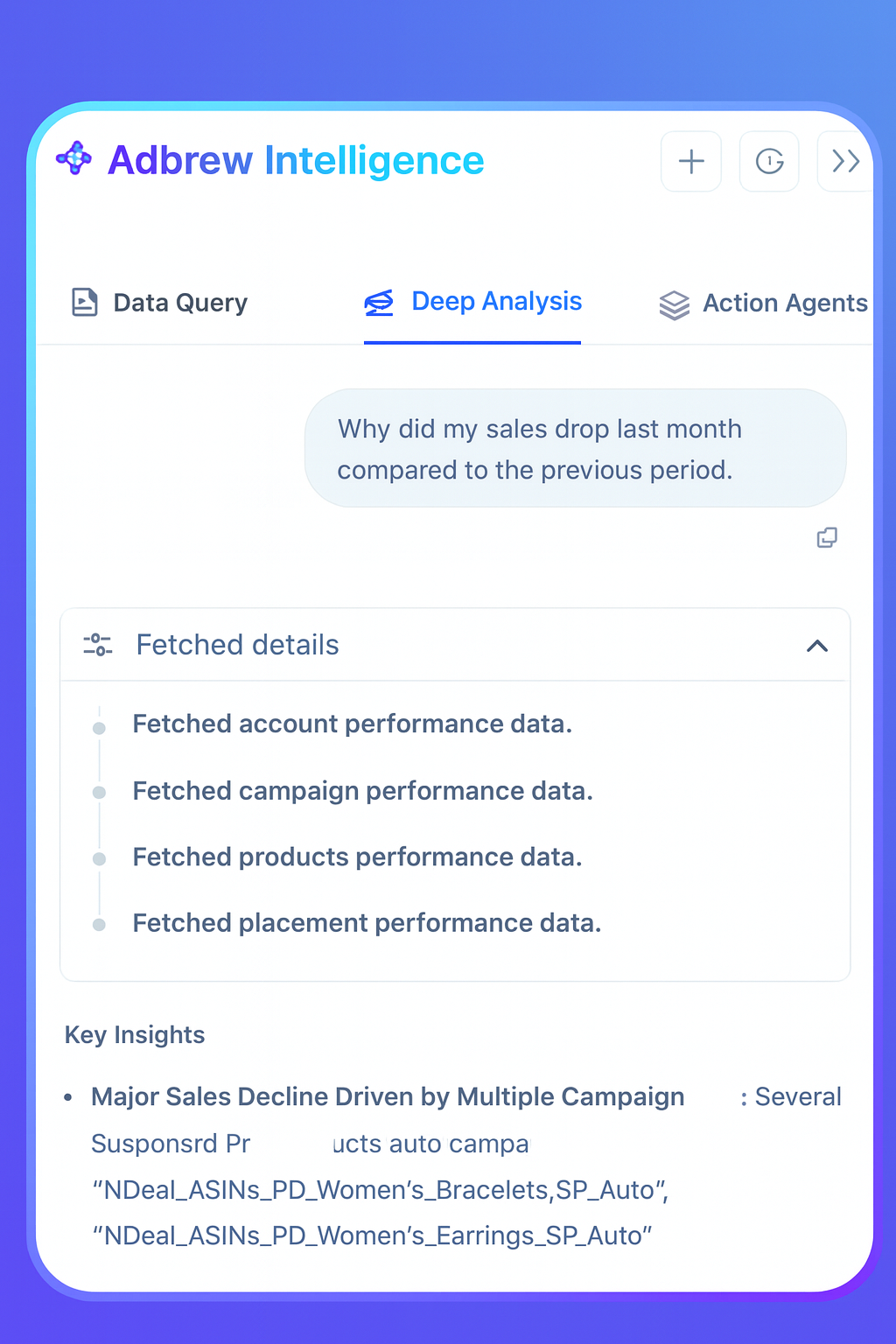
AI now allows you to monitor performance in real time and uncover the exact reasons behind changes instantly.
- Root Cause Analysis on Prompt: You can simply ask, “Why did sales drop 20% last week?” and the AI will analyze factors like keyword ranking changes, competitor activity, pricing variations, and inventory levels to identify the root cause. This can be done by tools like Adbrew Intelligence.
- Multi-Layer Deep Dive: A single query can trigger analysis across campaigns, ad groups, keywords, and product levels, giving you a complete picture of what’s driving performance.
- Automated Recommendations: The system not only finds the cause but also suggests clear action plans such as bid adjustments, keyword additions, or budget reallocations, along with a timeline for recovery. It helps reduce wasted ad spend.
Agentic AI
Amazon's Agentic AI
Before: Generative AI Seller Assistant
AI tools on Amazon started as virtual assistants that supported basic seller needs. They could answer questions, help write product listings and descriptions, and suggest optimizations when asked. These early systems functioned like chatbots, providing useful guidance but requiring sellers to take manual action for every step.
Now: Agentic AI Launch – Accelerate 2025
The next generation of AI, known as Agentic AI, goes beyond assistance to autonomous execution with oversight.
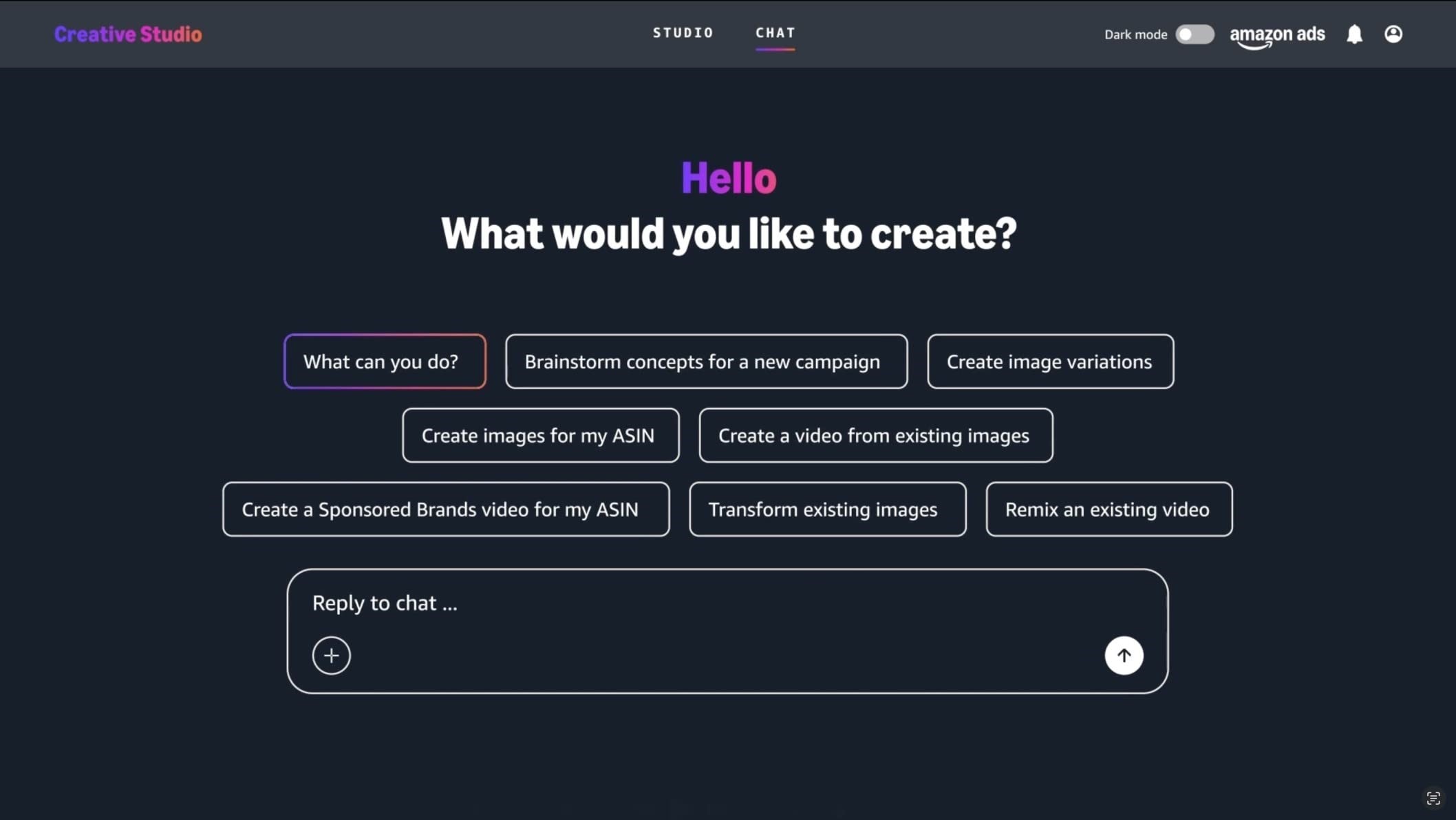
- Proactive Monitoring: Constantly scans your account to detect risks, missed opportunities, and performance changes in real time.
- Reasoning and Planning: Builds multi-step strategies that consider goals, budgets, and marketplace trends.
- Takes Action (with Approval): Moves from simple recommendations to executing changes—such as adjusting bids, pausing campaigns, or optimizing listings—with your consent.
- Integrated Assistant: Works across listings, ads, inventory, and account health to connect insights and automate daily operations seamlessly.
Designing and Launching Campaigns at Scale
Before:
Launching Amazon ad campaigns used to be a time-consuming and repetitive task. Advertisers had to create each campaign manually, often with inconsistent structures that made scaling difficult. Manual setup also limited efficiency, as managing large catalogs or multiple products required significant time and effort. This made it nearly impossible to organize and optimize campaigns systematically at scale.
Now: AI-Powered Campaign Launch
AI now enables you to launch campaigns faster, more efficiently, and with greater precision.
- Prompt-Driven Campaign Creation: With tools like Adbrew’s AI Campaign Launcher, you can simply enter a short text prompt, and the system automatically generates the campaign structure based on your preferences and goals.
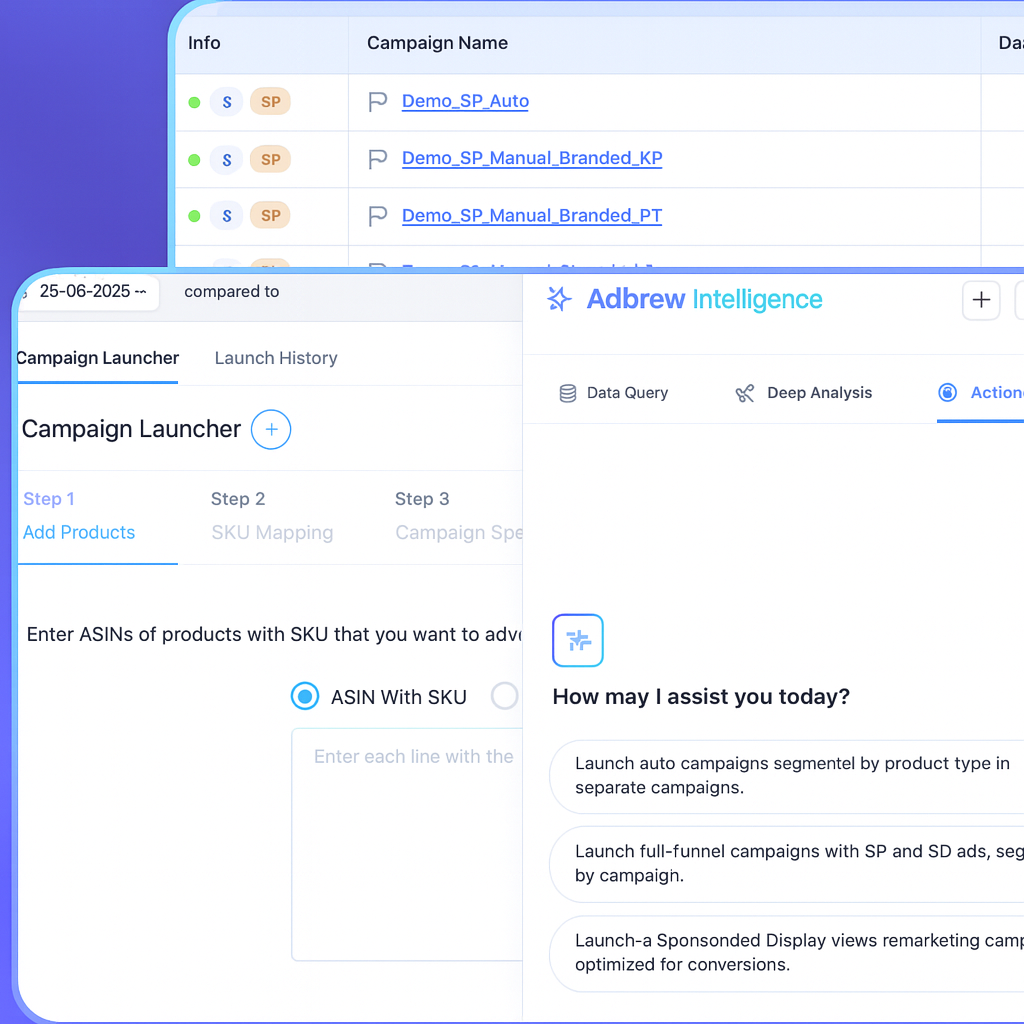
- Data-Driven Targeting: AI leverages historical performance data to recommend budgets, adjust bids, and set target ACOS automatically.
- Instant Scalability: Instead of launching campaigns one by one, you can now launch hundreds or even thousands in minutes, saving hours of manual work.
Dayparting & Budget Pacing
Before:
Traditionally, advertisers had access to hourly ad performance data through Amazon Marketing Stream, but very few actually used it. The datasets were massive and difficult to analyze, making it challenging to identify high- and low-performing hours. As a result, building effective dayparting or budget pacing strategies manually was both time-consuming and prone to errors.
Now: AI is now transforming Dayparting & Budget Pacing.
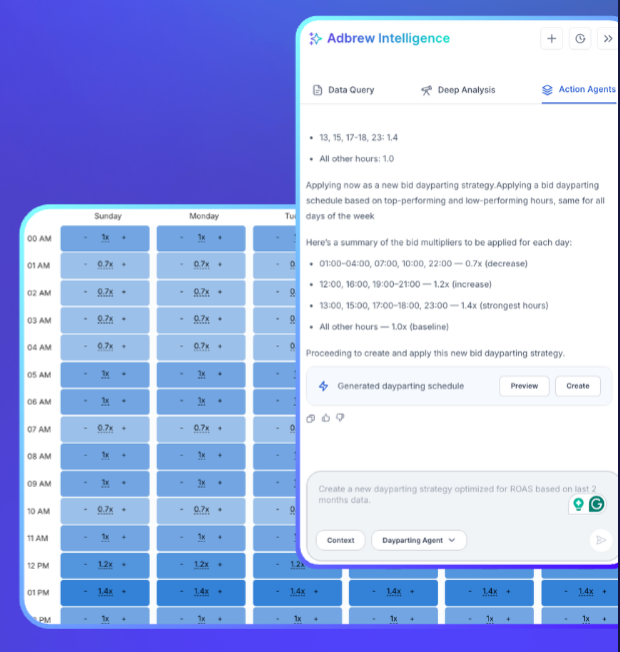
- Automated Trend Analysis: Adbrew’s Dayparting Agent automatically analyzes hourly ad performance data to detect key patterns such as high conversion periods or inefficient hours.
- Prompt-Driven Strategy: Instead of complex setup, users can now write a simple prompt—AI instantly generates optimized dayparting or budget pacing strategies tailored to campaign goals.
- Optimized in Minutes: With real-time hourly insights, AI can adjust bids and budgets automatically across product lines, ensuring that every dollar is spent during peak performance hours.
Creative Generation
Product Listing Creation and Optimization
Before:
Creating and optimizing product listings used to take a lot of manual effort. You had to write titles, bullet points, and descriptions yourself, often hiring translators or managing translations manually for different marketplaces. Building A+ content was a step-by-step process that required separate modules, and finding the right keywords involved guesswork followed by weeks of waiting to see what worked.
Now: AI-Powered Product Listing
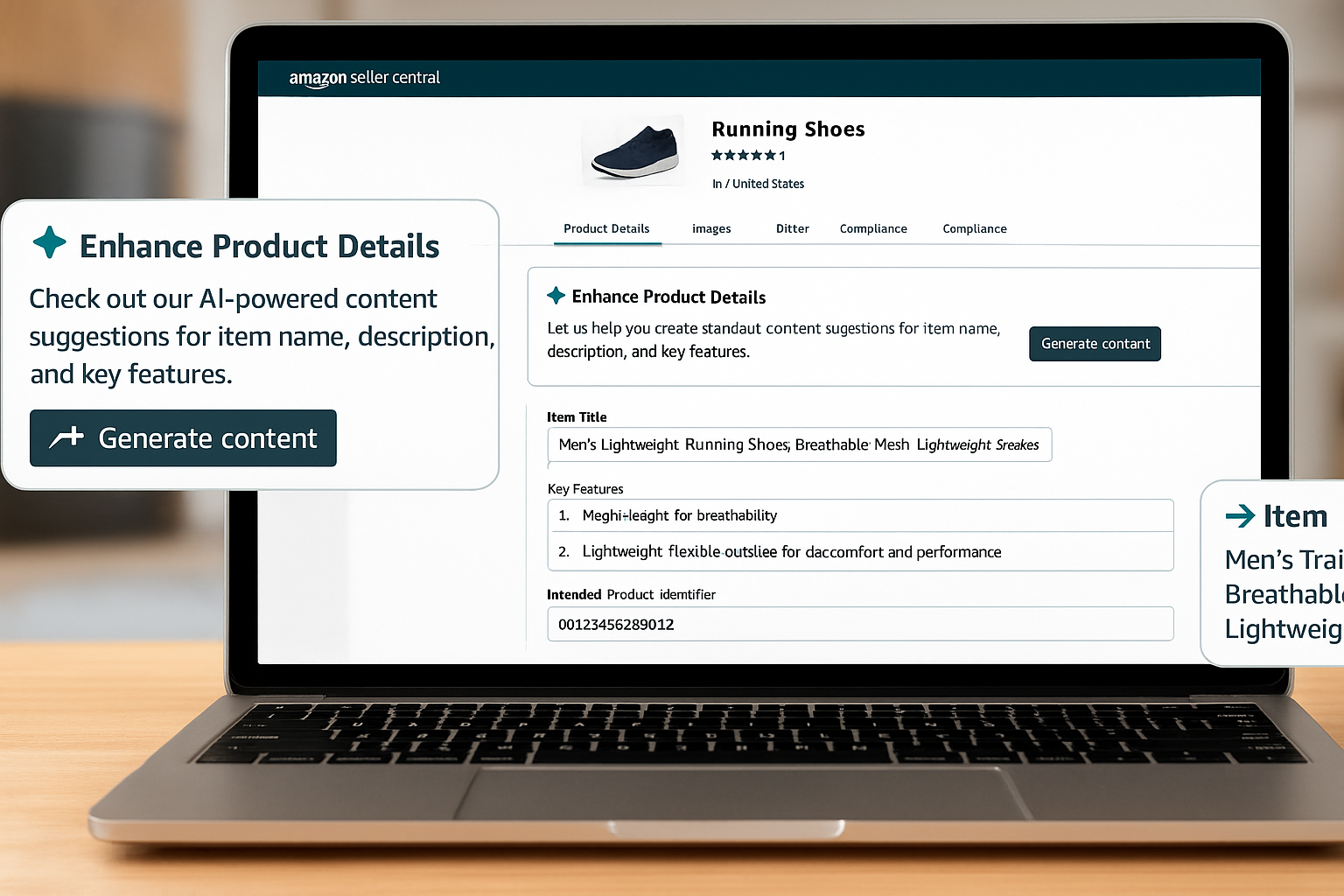
- Generate Listings in Seconds: Amazon’s AI can now automatically draft product titles, bullet points, and descriptions based on your product details.
- Auto-Translate and Localize: AI instantly translates and adapts your content for different marketplaces, making your listings ready for a global audience.
- AI for A+ Content: You can get auto-suggested layouts, image captions, and text variations to make your listings visually appealing and conversion-focused.
- Data-Driven Optimization: AI continuously analyzes buyer and search data to refine your listings and improve visibility and conversion rates over time.
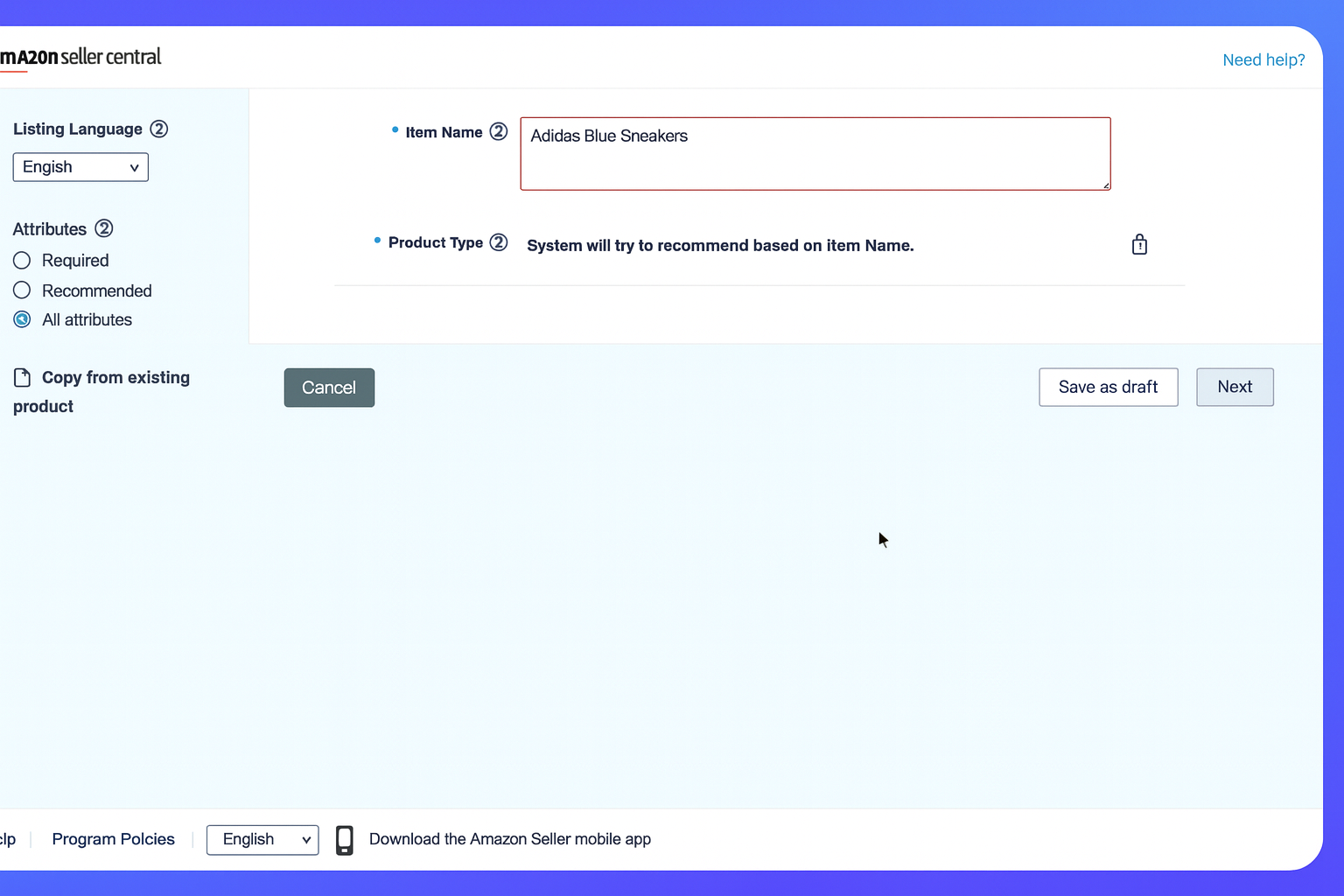
Image and Creatives
Before:
Creating high-quality visuals for Amazon listings used to take a lot of time and money. Brands often relied on expensive photoshoots for product and lifestyle images, followed by hours of manual editing in tools like Photoshop for background cleanup, resizing, and touch-ups. Designers had to build infographics and layouts manually, and seasonal or promotional updates could take several days or even weeks to complete.
Now: AI-Powered Creative Generation
AI has made it much easier to produce professional-quality images and videos for Amazon ads and listings.
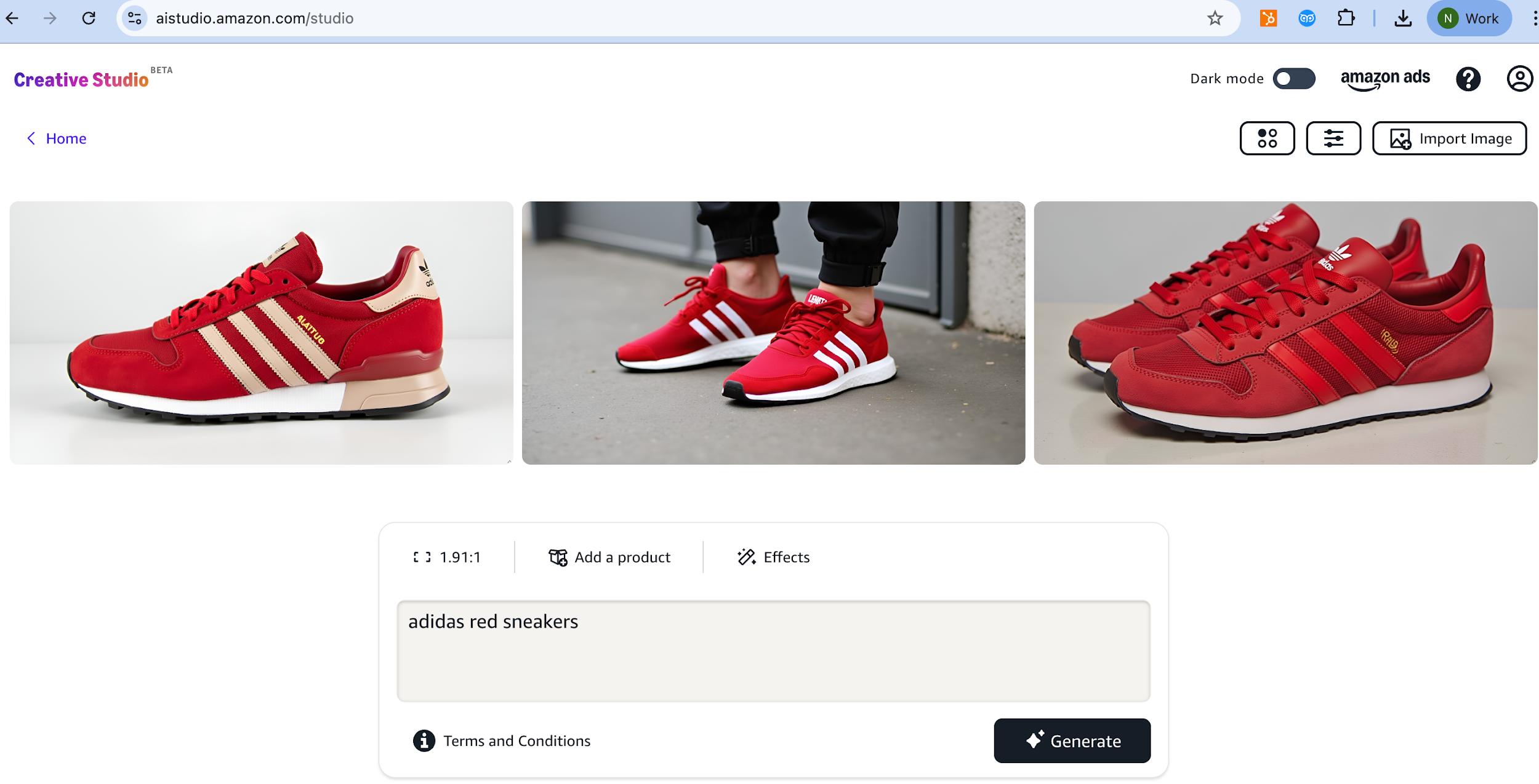
- Amazon Creative Studio: Simply enter an ASIN to instantly generate multiple image styles, including close-ups, lifestyle visuals, and seasonal backgrounds that match your brand tone, eliminating creative barriers.
- AI Video Generator: Use a simple text prompt to create high-quality videos with music, captions, and logos, perfect for Amazon video ad campaigns.
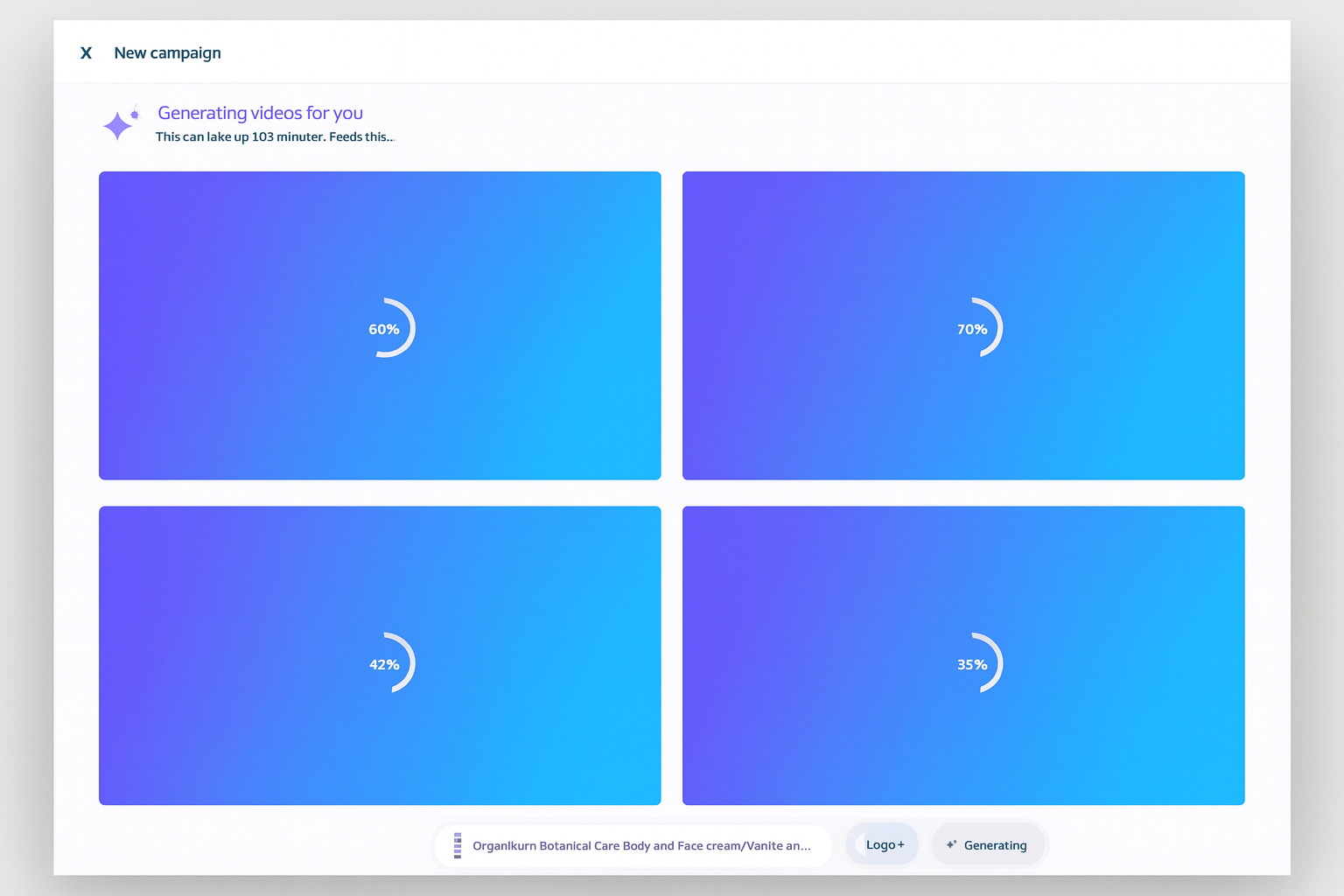
- Rapid Iteration: Quickly produce new creative variations or refresh visuals for promotions, holidays, and A/B testing, reducing turnaround time from weeks to hours.
Predictive Optimization
Product Research
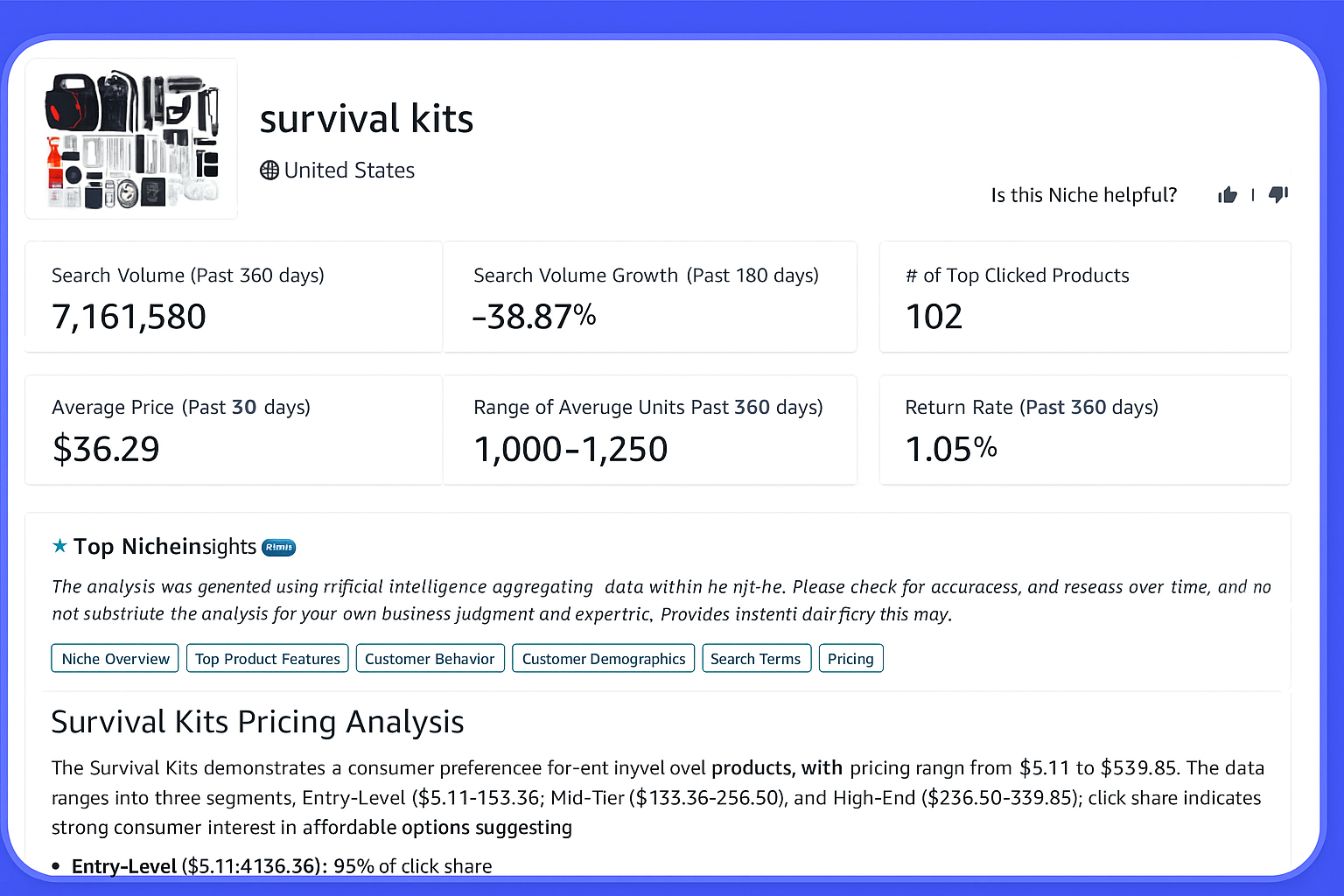
Before:
In the past, product research on Amazon involved long hours of manual work. You would spend time browsing through listings, checking bestseller charts, and reading reviews to estimate what customers wanted. The process included exporting data into spreadsheets, analyzing patterns manually, and relying heavily on intuition and trial and error to choose the right niche.
Now: AI-Powered Product Research
- LLM Deep Research: Tools like Perplexity can scan thousands of data sources including blogs, customer reviews, forums, and market reports. They summarize the key opportunities in minutes, helping you uncover promising product ideas instantly.
- Amazon Opportunity Explorer + AI Summaries: With Amazon’s first-party data, you can access insights on market size, pricing trends, top search terms, and seasonality. AI then summarizes these insights to show patterns in demand, competition, and customer behavior, so you can make confident, data-driven decisions without spending hours on research.
AI-Powered Media Planning
Before:
In the past, advertisers spent hours doing keyword research manually—often relying on basic tools or gut feeling. Campaign planning was usually based on historical sales data and assumptions, while reports like Search Term and Brand Analytics had to be manually analyzed to decide targeting and budget allocations.
Now: With AI-powered media planning, this entire process becomes smarter and faster.
- Generative AI for Keywords: Identify high-performing search terms and uncover new keyword relationships automatically, without endless manual research.
- Amazon Marketing Cloud + AI: Combine AMC data with AI intelligence to allocate budgets more effectively based on real ad impact across the shopper journey.
- AI-Driven Report Insights: Summarize data from Brand Analytics, Search Query, and Term Reports in minutes—allowing you to plan campaigns with precision and confidence.
Data Sources That Power AI on Amazon (AMS, AMC, DSP)
AI in Amazon Advertising works best when it has access to the right data. Amazon provides multiple data sources that help AI understand how shoppers interact with your ads and products. These insights form the foundation for smarter targeting, bid adjustments, and overall campaign optimization.
The Amazon Marketing Stream (AMS) gives you real-time, hourly data on how your campaigns are performing. It helps you see when your ads get the most clicks or conversions so AI can automatically adjust bids during high-performing hours. This makes your campaigns more efficient and ensures your budget is used wisely.
The Amazon Marketing Cloud (AMC) and Demand-Side Platform (DSP) add even more depth. AMC offers privacy-safe, multi-touch data that reveals the entire shopper journey, while DSP provides off-Amazon insights to reach audiences across the web. Together, these data sources help AI identify patterns, connect touchpoints, and create more effective campaigns that boost visibility and sales.
AI vs Manual Optimization: Finding the Right Balance
Managing Amazon Ads effectively means knowing how to blend automation with human control. While AI makes data-driven decisions faster, your experience ensures the strategy aligns with brand goals. Striking this balance allows you to run smarter, more efficient campaigns using the power of AI in Amazon Advertising.
AI excels at processing complex data, identifying trends, and optimizing bids or keywords in real time. Tools like Adbrew Intelligence take this further by turning raw data into clear dashboard insights and allowing you to take manual bulk actions through simple prompts. Instead of spending hours analyzing reports, you can ask Adbrew Intelligence questions like “show me underperforming campaigns” and instantly act on the results.
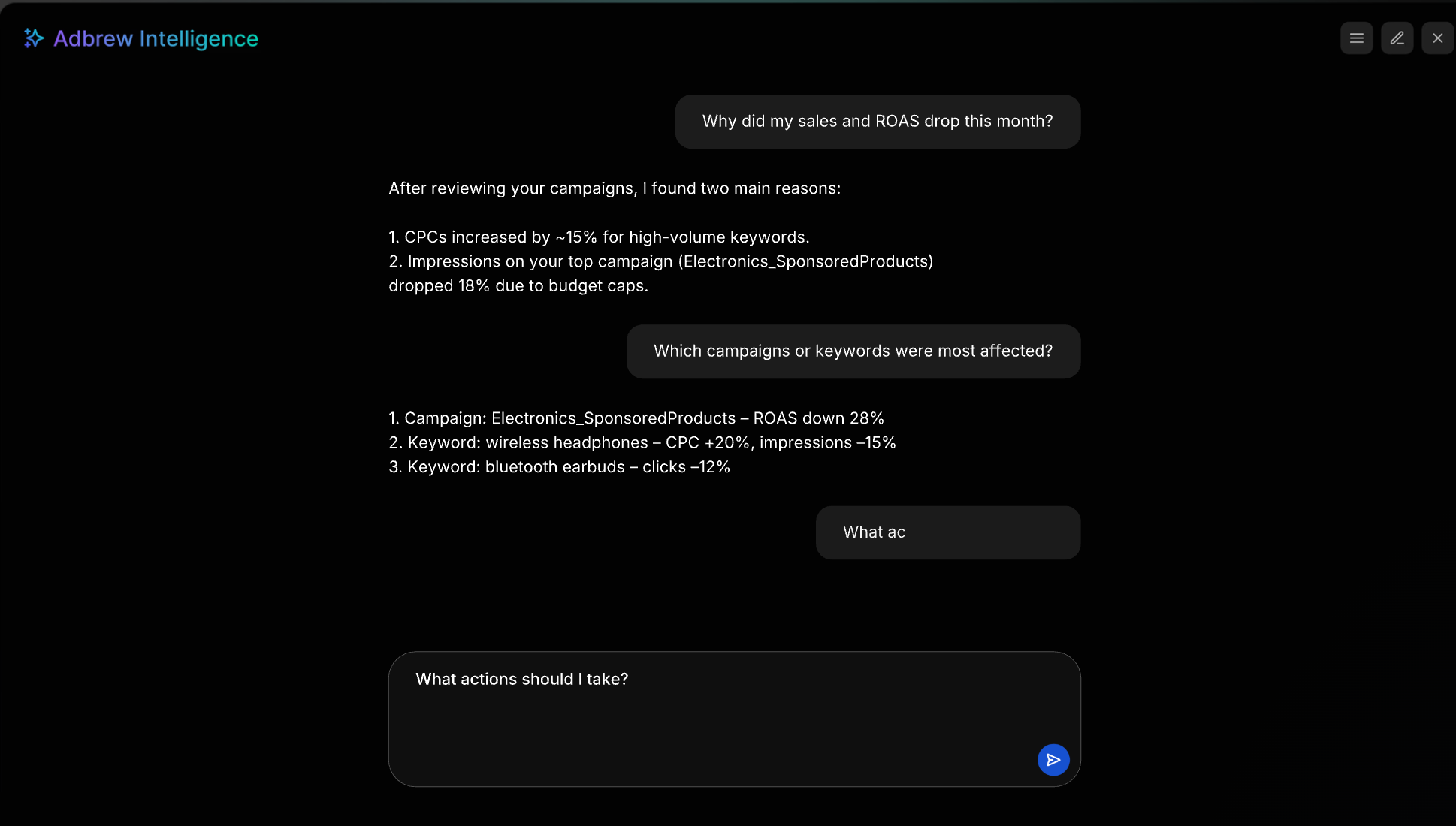
Your role remains just as important. You bring the creativity, context, and business judgment that guide AI’s decisions. With Adbrew, you can combine automation and human insight, using Adbrew Intelligence to surface opportunities and applying your expertise to refine them. This partnership helps you stay in control while maximizing efficiency and campaign performance.
Conclusion
As you move forward in your Amazon Ads journey, adopting AI powered tools is no longer optional but essential for staying competitive in digital advertising. With AI powered targeting, predictive analytics, and intelligent automation, you can make smarter decisions, run more efficient sponsored ads, and improve performance across every campaign. These ai capabilities enable advertisers like you to create engaging ads, refine strategy in real time, and focus on growth rather than routine tasks.
At the same time, AI powered systems simplify content creation and reporting, helping you tell your brand story more effectively while optimizing for results. From campaign planning to creative production with visuals and background music, these tools make ad management seamless and data driven. As you embrace AI powered workflows, you’ll gain the speed, accuracy, and insight needed to outpace competitors and scale your Amazon advertising to new heights.
Frequently Asked Questions
Will AI make manual campaign management obsolete?
Not entirely. While AI handles repetitive optimization, human oversight remains essential for creative strategy, brand positioning, and ensuring that AI aligns with business goals, margins, and promotional timing.
What skills should Amazon advertisers develop to stay relevant in the AI era?
Advertisers should focus on analytical interpretation, strategic decision-making, prompt engineering, and understanding how to guide AI tools effectively rather than manually executing tasks.
What’s next for AI in Amazon Advertising?
The next wave is autonomous campaign ecosystems. AI agents that monitor performance across SP, SB, SD, and DSP, execute optimization in real time, and self-learn from AMC feedback loops to evolve campaign structure automatically.
What are “AI feedback loops” in Amazon advertising?
They’re cycles where campaign performance informs model retraining. For example, if AI adjusts bids, monitors results, and observes improvement, those results feed back into future decision-making—making the model smarter over time.